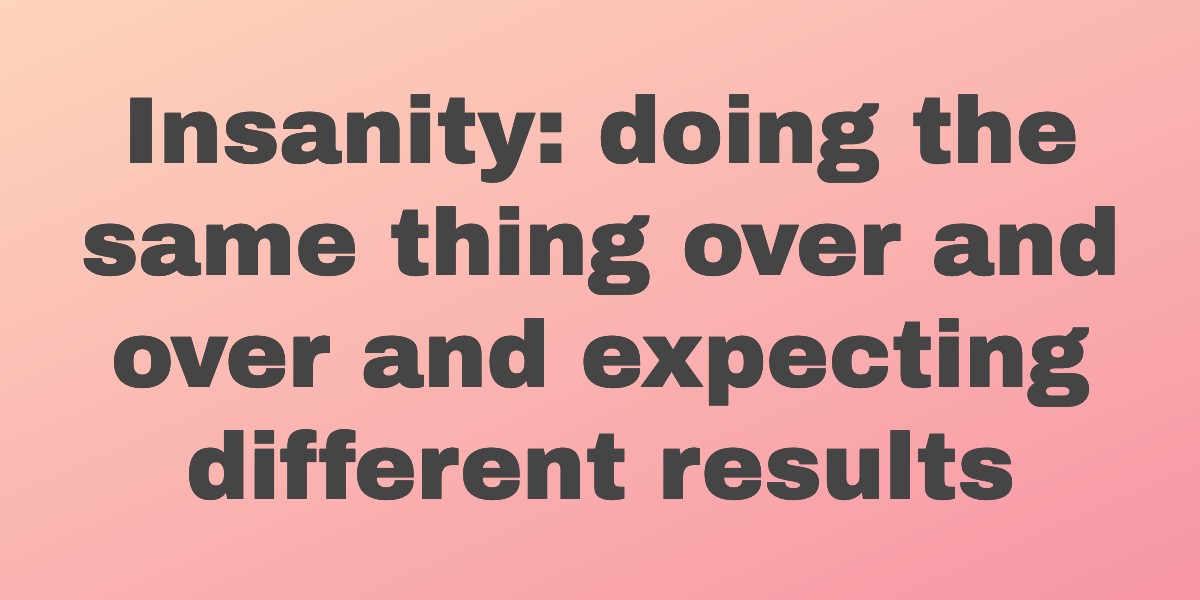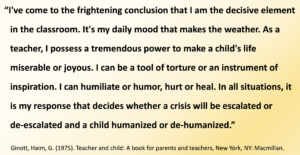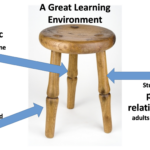Is It Time to Try Something Different?

Is it time to try something different with your students? Is there something you’ve been trying over and over again that just isn’t working?
One year, I remember it taking me way too long to realize that I needed to make a change. My class of fifth graders was a quirky group, and most of the time, they held things together pretty well. Morning meeting was wonderful. They loved reading and writing workshop. Their stamina for a good read-aloud was incredible.
Then we’d get to math. Two kids would make eye contact and start arguing before I could figure out what was going on. A squirrel would jump on a branch right outside our window, and someone would yell, “Whoa!” and the whole class would get distracted. Someone would fart on a plastic chair, and the whole class would fall apart with howls of laughter.
What was it about math lessons that year? Once they got settled at tables to actually work on math, they were fine, but the math lessons themselves were often a waste of time.
It’s embarrassing to admit that it took me until about February to try and really shake things up. I kept trying to teach whole class math lessons even though it was clearly not working. Sometimes it’s hard to think differently when you’re in the midst of everything. Set in my ways, it just didn’t occur to me that math could be taught without a whole-class lesson.
Finally, I started to think differently. My wife, Heather, who is also a teacher, once told me, “Anytime I find myself saying, ‘These kids just can’t…’ then I know I need to change something.” I decided to stop trying to teach whole class lessons. Instead, most days, I split the class into three groups. Usually this was about which kids could focus together rather than skills they needed, though that happened sometimes as well. When students weren’t with me in a lesson, they worked independently. It was amazing how much better the lessons went.
Isn’t it crazy how one simple change could make such a difference? Here are some other changes I’ve seen teachers make that have made a positive impact for their students.
Problem: Mayhem at the Cubbies
Every time a class transitioned to cubbies—where they kept most of their stuff since the class used flexible seating—conflict erupted. Kids jostled and shoved, and tempers flared. Books and other supplies often fell out of cubbies and were left on the floor, making the room look messy. The teacher reviewed the class rules about being safe and respectful. He reminded students about what transitions should look like. Nothing seemed to work.
Solution: Move the Cubbies
It finally occurred to the teacher that maybe the physical space itself was the problem. Too many kids were trying to access cubbies that were too close together. Once he rearranged cubbies so that they were spread around the room, transitions were peaceful and respectful.
Problem: Trouble Listening as a Class
A group of second graders had a hard time coming to attention when the teacher would try and make a whole class announcement. She would ring a chime to get the attention of the group and most would settle down, but a few wouldn’t. While she waited for the few to settle down, others would lose attention, and she’d have to ring the chime again. She tried remodeling and practicing, but for this particular group, coming together as a group continued to be challenging.
Solution: Reduce Whole Class Announcements
This teacher realized that there were other ways she could make announcements. Instead of having the whole class listen at once, she started going from table to table. “Hey, everyone, it’s time to put away word sort cards and transition to math. Meet in the circle in three minutes.” This simple change saved a lot of time and helped keep the spirit of the room more positive. Kids were more successful, and the teacher was less frustrated.
Problem: Flipped Learning Failing as Kids Don’t Do Homework
A teacher wanted to make sure that homework was meaningful, so many nights it involved preparation for the next day’s class. About a third of the students did their homework and were ready to go each day. About a third of the class half-did their work—rushing through it or doing the bare minimum. A third of students didn’t do it at all. Since the next class was dependent on kids doing their homework the teacher was often in the frustrating position of having to adjust lessons and activities on the fly. Learning was negatively impacted many days. The teacher begged and cajoled—trying to help kids understand why homework was necessary. She had kids share homework strategies with each other. A significant number of kids just couldn’t or wouldn’t do their homework.
Solution: If It’s Worth Doing, Do It in Class
This teacher finally decided to work with the time she and her students had together. As much as she loved the idea of flipped learning, students were falling further behind when they didn’t do work outside of class. She prioritized learning and stopped trying to control what she couldn’t control. This teacher decided to use class time as efficiently as possible. She figured, if it’s worth doing, we’re doing it together. (For an interesting article about a high school math teacher who dropped homework and saw his students’ math skills skyrocket, click here.)
Problem: Too Many Questions, Not Enough Adults
Fourth grade teacher, Gillian Andrews, struggled with getting to all of the students in her class during writing workshop. Some students needed help with punctuation while others struggled with verb tenses, while a few others needed help setting the right mood through settings. She found herself wishing there were more of her.
Solution: Teacher Cloning
Okay…Gillian didn’t actually clone herself. She used technology to record lessons her kids needed so they could access help when she wasn’t available. Her students loved it so much that they started requesting lessons for her to record. You can read all about how Gillian did this in these two blog posts: Need More Teachers? Clone Yourself! and Getting Yourself Started with Cloning Yourself in the Classroom.
What’s something that could use reworking with your students? What’s an idea you’ve tried in that past—and how did it go? Share your ideas and stories in the comments section below so others can learn from your experience!





